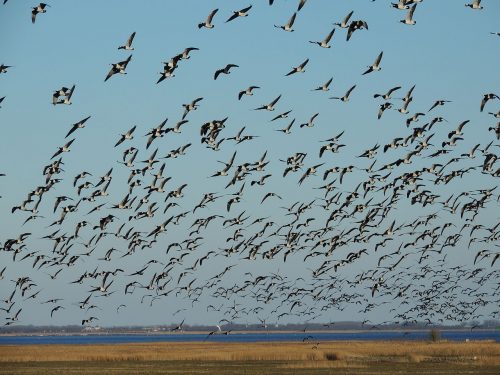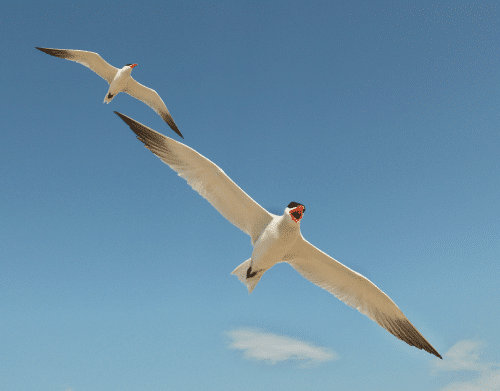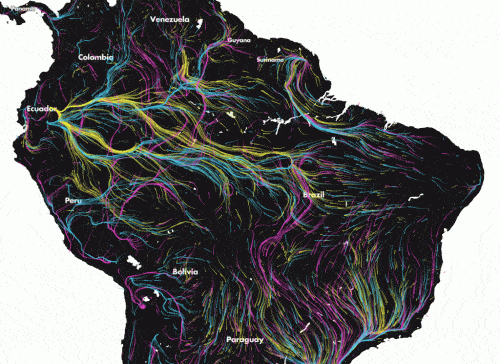Climate change is causing a massive migration of animals to cooler areas. A new dynamic map makes it possible to follow the new migration routes in the world

by Dr. Daniel Medar, angle, news agency for science and the environment
Would you be surprised to see camels grazing in the green hills near London, or find alligators swimming in the Hudson River in New York? A surprise of the same magnitude was the share of American researchers who observed a mercury gull in the northern sky of Alaska. Caspian gull (Hydroprogne caspia) is a species of bird that nests in many sites in the world (Israel, by the way, is a transit stop on the way to other places, but it also has several non-permanent nesting sites in the Gulf of Eilat). Recently, they were spotted nesting on the northwest coast of Alaska - about a thousand kilometers north of their northernmost known nesting sites in the United States.
What did they do there? The researchers explain this unusual event in the climate change we are experiencing. The average temperatures in large areas of the world are increasing and causing species of living creatures to move towards cooler places. This is because they are usually evolutionarily adapted for optimal activity in certain climatic conditions, and also because the distribution of their food sources changes with climate change. Alaska is warming twice as fast as the rest of the US, with the average winter being 3.3 degrees Celsius warmer than it was 60 years ago. Like most of the months in the last two years, last September was also the warmest since measurements began in 1880.

Most of the time, the living creatures migrate up mountains or towards the cold poles. It is understood that for flying species such as birds, bats and even insects, migration is faster and easier compared to non-flying species. Therefore, we first see the migration of flying species, as in the case of seagulls. Terrestrial species, unlike birds and marine creatures, also have additional migration problems in the form of man-made obstacles - cities, roads, dams, fences, etc.
Migration on the move
New studies examine the expected migration routes of vertebrates in America as climate change materializes. "Immigration on the move" (Migration in Motion) is the name of a new visualization project that presents the results of these studies on a dynamic map. The map shows how the migration routes of about 3,000 species of birds, mammals and amphibians in South and North America are expected to look in the wake of climate change, when the researchers also took into account the effect of man-made obstacles.
This project illustrates which areas will be critical for the migration of hundreds and thousands of species. These areas include the eastern US, southern Brazil and the Amazon basin. In the eastern United States, for example, many species are expected to rise with climate change from the plains and hills to the Appalachian Mountains, and from there northeast in a bottleneck along the ridges. However, only two percent of the natural area in the eastern United States is connected in an adequate way that allows for the migration of species in accordance with climate change. In South America, species are expected to move up the Amazon basin, to higher terrain closer to the Andes. In this area, there are far fewer human obstacles that could hinder their migration.

Bridges, crossings and fences
Some of the creatures at high risk are amphibians, such as salamanders, newts, frogs and toads. Not only are these animals slow, but they also usually have to spend a considerable part of the day in water sources such as lakes, ponds, streams and rivers. Therefore, they are at risk of dehydration if a warming water source is neglected, and a new, cooler water source is not quickly found.
The studies detail the areas where it is appropriate to invest resources in increasing the connectivity between the natural areas, by establishing safe passages for animals over roads and around settlements (overpasses, underground passages, channel fencing around settlements and along roads, etc.). Without sufficient connectivity, hundreds and even thousands of species are expected to become extinct, due to their inability to reach a suitable climate for living.
In Israel, the expected migration will also be from south to north. It is likely that it will be carried out through Ecological corridors of open spaces, farmers and conservationists. However, Israel has an acute problem of blocking the corridors in the center of the country by accelerated urban development.
It may be necessary to rethink the place of nature reserves in a world of changing habitats. And larger migration routes and northern reserves must be guaranteed.
A short video that explains how climate change affects animal migration:
